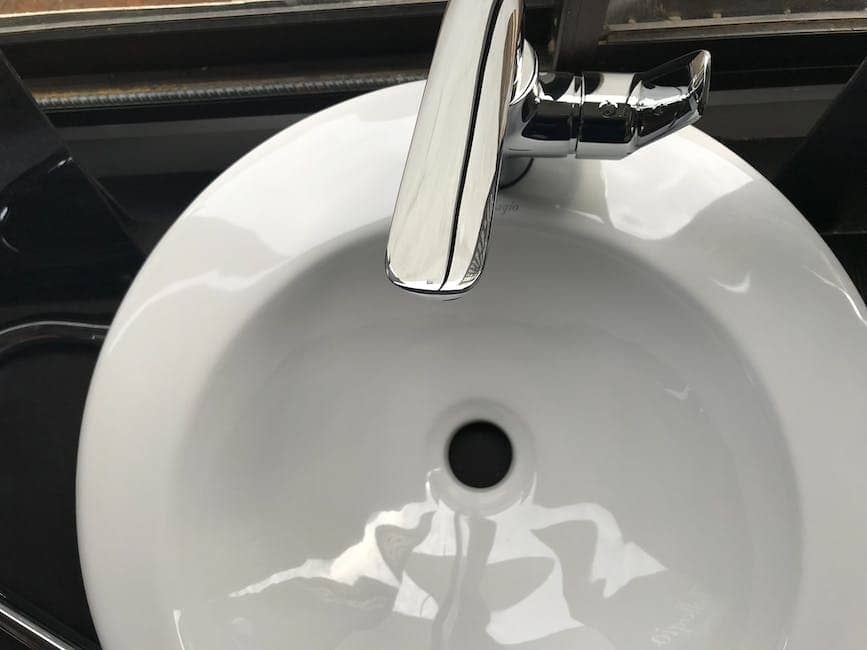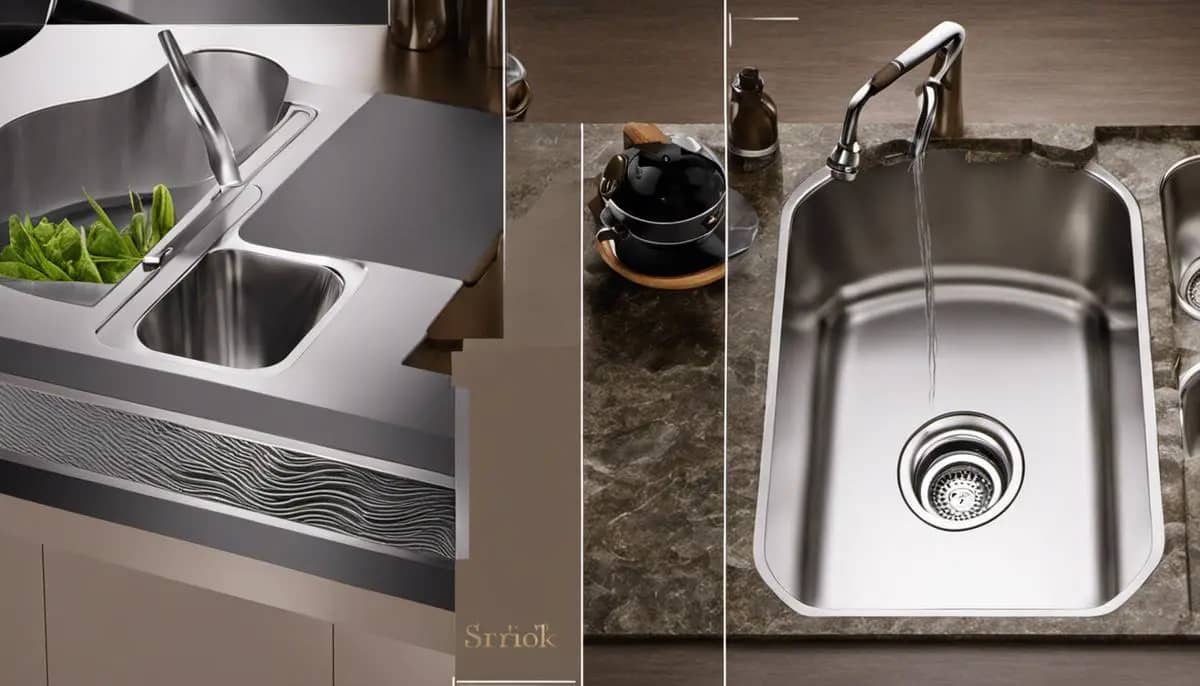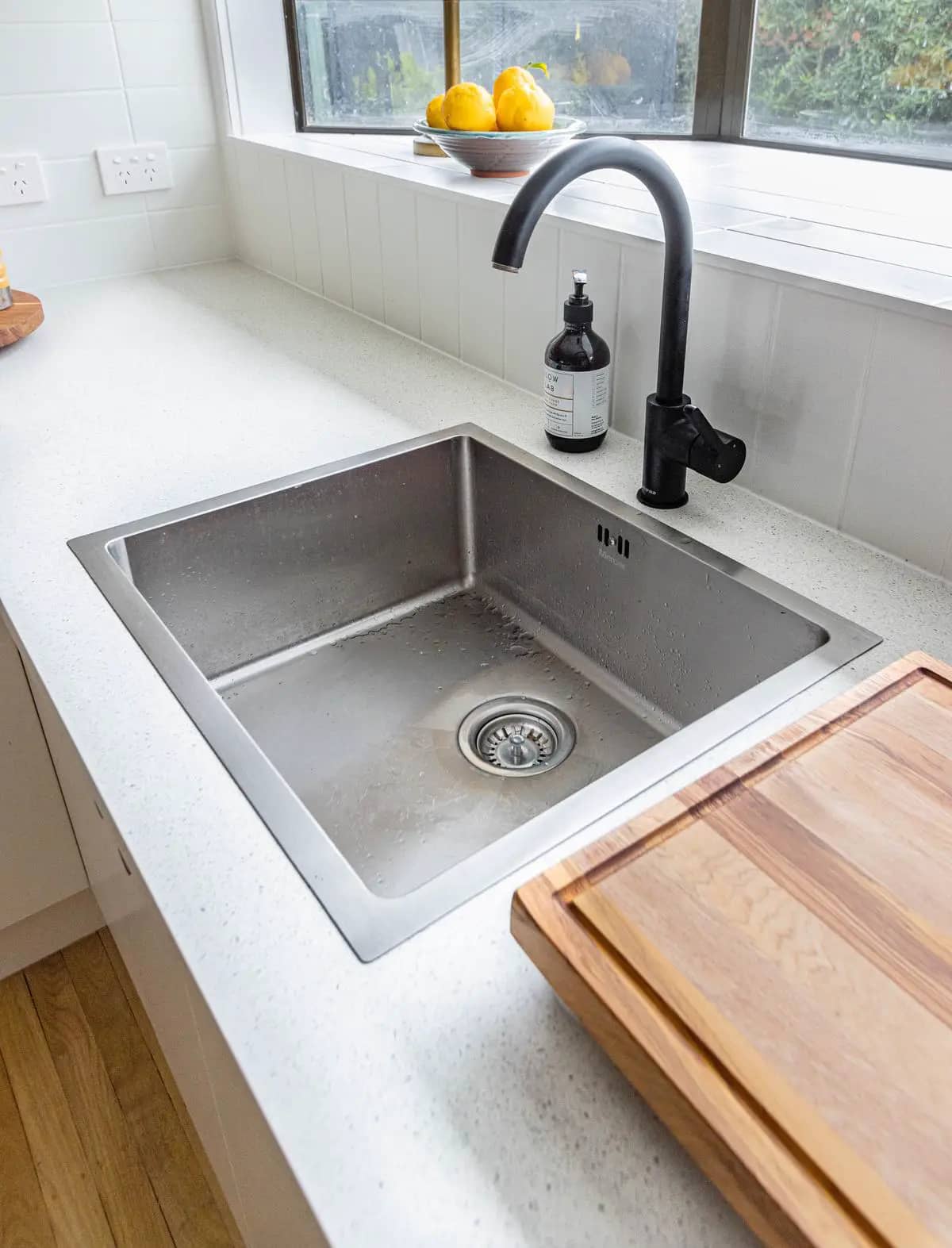As an Amazon Associate, I earn from qualifying purchases
Whether you’re designing a new home, renovating your existing one, or simply updating a key space, understand the difference between a Bar Sink vs Kitchen Sink. Both types of sinks have their specific functionalities, aesthetics, pros, and cons. Just as the kitchen is the heart of the home, the kitchen sink is undeniably a core component of this vital room. On the other hand, the bar sink, often overlooked, carries its own charm and utility. In this comprehensive review, we will delve into the diverse world of kitchen sinks and bar sinks. Understanding attributes such as types, sizes, appropriate materials, installation methods, common uses, and upkeep tips will assist you in making an informed decision about which one suits your needs the best.
Understanding Kitchen Sinks
Kitchen sinks are an integral component of any household kitchen setup. They are available in various types and sizes to cater to the varied requirements of different homes. The standard dimensions of a kitchen sink are typically 22 by 30 inches, with a depth ranging between 8 to 10 inches, though larger sizes are available for households requiring more space.
These sinks are made from a variety of materials, including stainless steel, cast iron with enamel finish, composite materials, and fireclay. Stainless steel, due to its resistance to heat and stain, is the most popular choice. Cast iron sinks with enamel finishes, on the other hand, are praised for their durability but are much heavier. Composite sinks provide a balanced combination of durability and aesthetics, while fireclay sinks have a distinctive, classic look and are resistant to scratches and stains.
Kitchen sinks can be installed in multiple ways, but the two most common methods are top-mount and under-mount installation. Top-mounting is the traditional method wherein the sink drops into a hole cut out of the counter, while undermount sinks are installed under the countertop for a seamless look.
Pros
Pros of kitchen sinks include versatility in designs and sizes, durability (depending on the material), and adapting well to daily rigorous kitchen chores. The cons hinge largely on the quality of the material and the installation method used. Challenges may include susceptibility to scratches, stains, or even rust, difficulty in cleaning around the edge (in the case of top-mounted sinks), or requiring professional installation (under-mount sinks).
When considering buying a kitchen sink, think about the size of your kitchen, your specific needs, the type of installation you prefer, and the durability of the material. Read consumer reviews and ratings of different brands and models to make an informed decision.
Taking care of your kitchen sink is crucial to prolong its life and maintain hygiene. Regular cleaning using non-abrasive cleaners and rinsing with warm water can help maintain it. Metal sinks can benefit from an occasional polish, and avoiding hard water can prevent mineral build-up.
Understanding the Differences Between Bar Sink vs Kitchen Sink
While both serve their respective purposes, there are distinct differences between bar sinks and kitchen sinks. Let’s start with bar sinks. These are tailored to create a convenient space for drink preparation, specifically cocktails and other beverages. Moreover, if required, it can also function as an additional prep sink in your kitchen.
When compared by size, bar sinks are generally smaller than kitchen sinks. Common dimensions of a bar sink extend from 9.5 x 9.5 inches to 18 x 18 inches, and they are usually shallow, with a depth spanning between 6 to 7.5 inches.
If you’re considering the materials involved, bar sinks often mimic kitchen sinks. Stainless steel is a prevalent choice, owing to its durability and corrosion resistance. However, composites and copper also find favor, particularly for their aesthetic appeal.
Installation methodologies for bar sinks mirror those of kitchen sinks. Depending on aesthetic preferences and space availability, you can choose from among top-mount or drop-in, undermount, or a sink integrated within the countertop.
As it pertains to use and upkeep, a bar sink can fit perfectly in a mini-bar or as an auxiliary sink in a larger kitchen. Regular cleaning is vital to ensure longevity, and the use of hard water should be eschewed to prevent mineral accumulation.
Hence, although both kitchen and bar sinks offer distinct functionalities, the choice between the two hinges on personal requirements. Consider the purpose, space available, the visual theme you’re targeting, and your budget. While both could enhance your home, they each carry their own merits and demerits. Consequently, a judicious choice is recommended to cater to your lifestyle and preferences.

Understanding Bar Sinks
An In-Depth Glance at Bar Sinks
Also known as wet bar sinks or cocktail sinks, bar sinks are compact, convenient fixtures usually found in commercial bars, home bars, or entertainment spaces. They are engineered to enhance the ease of preparing drinks and performing speedy clean-ups. The scope of their usage primarily includes washing glassware or rinsing cocktail mixers, and they are not typically meant for large-dish, heavy-duty cleaning.
The market offers a plethora of bar sink styles like drop-in sinks, undermount bar sinks, stainless steel bar sinks, copper bar sinks, and even cast iron bar sinks. Each one varies in terms of design, the resources involved, and how they are installed. While their sizes may also differ, the majority of bar sinks measure somewhere within the 9”x9” to 20”x20” range.
Pros and Cons of Bar Sinks
One of the primary benefits of bar sinks is their convenience. Their size makes them perfect for quick rinses and small clean-up tasks. Bar sinks also up the resale appeal and value of a home, offering an aesthetic touch to bar or entertainment areas.
On the other hand, the compact size of a bar sink can also be a drawback. It lacks the versatility and capacity of a full-sized kitchen sink. They also increase the plumbing workload as more piping and maintenance are required.
Installation Process
Bar sink installation processes vary depending on the type and material of the sink. However, it generally involves choosing a location, prepping the bar or counter, and installing the sink along with necessary plumbing connections including drain, hot and cold water lines. Hiring a licensed professional is recommended for the installation process to ensure proper fitting and working of the sink.
Selecting the Right Bar Sink
While choosing a bar sink, several factors should be considered. Firstly, choose a sink that matches the décor or theme of your bar or entertaining area. Second, consider the sink material- stainless steel is easy to clean and long-lasting while copper can add an antique touch. Thirdly, consider usage patterns- if you host large gatherings frequently, a larger bar sink might be more beneficial.
Upkeep and Care
As for maintenance, bar sink care will depend on the materials used. Stainless steel sinks require regular cleaning to avoid spots. Copper sinks also need specific care to maintain their look. Cleaning agents for bar sinks should also be chosen meticulously, with non-abrasive cleaners being the optimal choice.
Understanding the Differences: Bar Sink vs. Kitchen Sink
At first glance, one might think that all sinks are created equal. However, when it comes down to bar sinks and kitchen sinks, there are distinct differences in terms of their size, usage, and installation process.
On one hand, kitchen sinks are larger and more extensive in their use. They are crafted for dealing with larger tasks such as washing hefty pots or prepping an entire meal. Features such as garbage disposal hookups are often integrated into their design, leading to a more complex installation process.
On the other hand, bar sinks are smaller and designed to handle simpler, less time-consuming tasks. These sinks serve as supplementary units within the kitchen space or home bar, aimed at providing convenience rather than heavy-duty cleaning. The simple design and smaller size lead to a less complicated installation process.

Comparing Bar Sink vs Kitchen Sink
Diving Deeper into Bar and Kitchen Sinks
A closer look at the bar sink, also known as an entertainment or prep sink, reveals a smaller, more compact design. Typically installed in home bars or kitchen islands, these sinks are usually around 15-16 inches wide and just 5-6 inches deep. These dimensions make them ideal for handling secondary tasks such as rinsing vegetables, serving drinks, or even as a handy place to wash your hands.
On the other hand, a kitchen sink is the main sink found in most homes. It is larger in size, usually 22-33 inches wide and 9-10 inches deep. This sink is equipped to handle more substantial tasks such as washing dishes or large pots and pans.
Design Considerations for Bar and Kitchen Sinks
In terms of design, bar sinks typically present more stylistic flexibility due to their petite size. They can be round, square, or even triangular, and can be found in a variety of materials – such as stainless steel, copper, cast iron or composite materials.
Kitchen sinks, due to their larger size and heavier usage, are more function-oriented in design. Double-bowl models are common to encourage multitasking. There are a variety of shapes and materials available, but rectangular stainless steel or cast iron sinks are the most popular due to their durability.
Usage and Installation of Bar and Kitchen Sinks
When it comes to usage, the larger size of kitchen sinks makes them optimal for everyday heavy-duty chores like cleaning large pots, while the smaller bar sinks serve well for secondary tasks.
Installation-wise, bar sinks can be dropped in, under-mounted, or vessel-style on top of the counter. Installation is relatively easier due to their smaller size. Kitchen sinks, on the other hand, often require professional installation due to their weight and size. They are usually either dropped in or under-mounted.
Cleaning and Maintenance of Bar and Kitchen Sinks
Both types of sinks should be cleaned regularly to maintain their appearance and avoid problems like staining or odors. Bar sinks, due to their smaller size and lighter usage, are generally easier to clean. Kitchen sinks, due to their heavy usage, may need more thorough cleaning, especially if they are made of more porous materials such as cast iron.
Selection Based on Requirements and Space
Choosing between a bar sink and a kitchen sink ultimately comes down to your individual needs and spatial availability. A kitchen sink is a must-have in any home. However, if you have frequent entertainment and have the room, bar sinks can be valuable assets. They offer added convenience, extra washing space, and even a touch of luxury to homes.
What matters, in the end, is your personal preference and the tasks you foresee doing in the sink. Consideration should be given to both function and style when deciding between the two types of sinks. Your sink, after all, is a significant element in both the functionality and aesthetics of your kitchen or bar area.

Ultimately, the choice between a bar sink and a kitchen sink depends upon personal preferences, space restrictions, and specific functionalities. By comparing both in terms of design, usage, installation, maintenance, and cleaning, we discover that each kind has its unique place and role, making both essential entities in our living and dining areas. So, whether you lean towards the more robust and versatile kitchen sink for heavy-duty food preparation or the humble bar sink with its more tailored purposes like cocktail preparation and easy clean-ups, having a clear understanding of these sinks can only make your choice easier and your home or establishment more effectively designed.
The Bottom Line
Every home is unique, and the best decision should simplify your life and add value to your property at the same time. Whether you opt for a classic kitchen sink, a functional bar sink, or a combination of both, it’s important to choose a design that fits seamlessly within your space and enhances your lifestyle.
Remember, installing a sink, whether it’s for your kitchen or bar, isn’t just about functionality; it’s also about complementing your interior style. Be it a sleek stainless steel sink for a modern kitchen, or a copper bar sink for a rustic mini bar; the choice is yours!
We hope this comprehensive comparison between a bar and kitchen sink has lessened your confusion and made your decision-making process easier. Happy home improvement!
Bar Sink vs Kitchen Sink FAQs:
The price of either a bar sink or a kitchen sink primarily depends on the type of material it is made from, its design, brand, and other specifications. Typically, a kitchen sink might cost more than a bar sink due to its larger size and the additional features it may come with, such as integrated drainboards or cutting boards.
Technically, a bar sink can be used as a kitchen sink. However, due to the smaller size of a bar sink, it may not be as efficient in performing various kitchen tasks such as washing large dinnerware or pots and pans. If kitchen space is limited, using a bar sink might be a practical option; however, consider your kitchen needs and tasks before making a decision.
Installing a bar sink or a kitchen sink can be a DIY project if you are comfortable with plumbing tasks. If not, it’s better to hire a professional to avoid potential mistakes and leakage issues. This can typically be done within a couple of hours. Besides the sink itself, you will also need specific tools and materials such as a jigsaw, silicone sealant, and a plumber’s putty.
Bar and kitchen sinks come in various materials, each offering a distinct aesthetic appeal and functionality. Some of the most popular materials include stainless steel due to its durability and easy maintenance, porcelain for its classic beauty, granite composite for its extreme durability and natural look, and copper for its unique, rustic appeal.
Leave a Reply